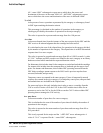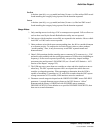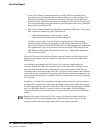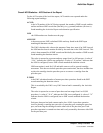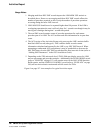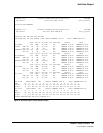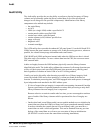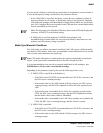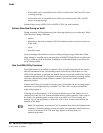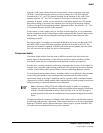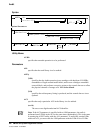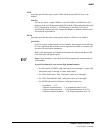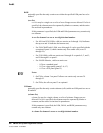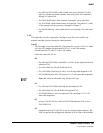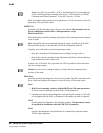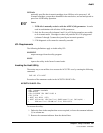
200 VM/HSC 6.0 System Programmer’s Guide
1st ed., 6/30/04 - 312579601
• If the media value is unreadable by the LMU (recorded in the CDS), the HSC issues
a warning message.
• If the media value is unreadable by the LMU (not recorded in the CDS), the HSC
issues a warning message.
In both of these cases (APPLY(NO) or APPLY(YES)), the audit continues.
Actions Permitted During an Audit
During execution, AUDIt permits any of the following actions to occur within any LSM in
which an audit is being conducted:
• mounts
• dismounts to the same or another LSM (if the home location exists prior to the start
of the audit)
•ejects
• pass-thru events.
No new cartridge cell allocations can occur during audit processing within those LSMs
being audited, so cartridge enters and pass-thrus with MNTD Float(ON) are not allowed in
ACSs or LSMs involved in the audit. In addition, scratch redistribution is not allowed in
an ACS being audited.
How the AUDIt Utility Functions
Each LSM element to be audited is scanned, cell by cell, and compared with the volume
and cell information for the corresponding entries in the library control data set. If the
APPly(YES) parameter is specified, the control data set is corrected to reflect the current
contents of the inspected cell. If duplicate volumes are found in either a previously audited
cell in the LSM currently being audited or another LSM, the last volume scanned is
physically ejected.
Volumes which are to be ejected are moved to the CAP identified in the invoking control
statement or to the highest-priority, available CAP. The CAP is not allocated until the
Audit utility requires it.
If, during the Audit operation, a CAP is required and the scope of the Audit is a row or
column level Audit, the CAP remains allocated until the Audit completes. If the scope of
the Audit is for multiple panels or larger (such as an LSM or ACS level Audit), the
operator is given the opportunity to release the CAP or have it remain allocated for the
duration of the Audit.
Note: The opportunity to release the CAP is presented only after each full panel audit
completes. An audit consisting of only one panel is not presented with the choice to
reserve or release the CAP. The same logic applies to the last panel of a
multiple-panel audit.
Audit



